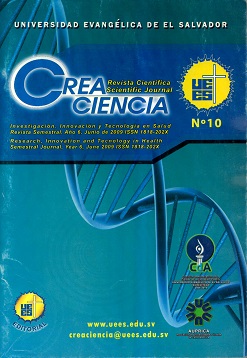Histological evaluation of pulpotomy in dog teeth, in the formation of dentin bridge when using added mineral trioxide and calcium hydroxide
DOI:
https://doi.org/10.5377/creaciencia.v0i10.8154Keywords:
dentin bridge, added mineral trioxide, calcium hydroxide and histological evaluation,, El SalvadorAbstract
The purpose of this experimental study was to compare histologically the dentin bridge formed on the remaining pulp tissue by calcium hydroxide and mineral trioxide added, used in the pulpotomy technique in dog teeth. The treatments were carried out in a similar way in six vital dental pieces, three of the lower right hemiarch in pieces, in which chemically pure calcium hydroxide was produced. After the pulpotomy, each of the teeth was restored with silver amalgam, after forty days the research subject was sacrificed, later the pieces were separated from the mandibular bone and processed for their respective histological evaluation. Histological analysis begins the formation of the intended bridge using both materials. The dentin bridge formed by the Aggregate Mineral Trioxide (MTA) was more compact and less permeable than that formed by Calcium Hydroxide, favoring pulpal repair, isolating it better from the external oral environment, reducing the microfiltration of fluids and microorganisms that can cause pulp compromise.
Downloads
Published
Issue
Section
License

This work is licensed under a Creative Commons Attribution-NoDerivatives 4.0 International License.
Los artículos de Crea Ciencia están publicados en acceso abierto bajo una licencia CC BY-NC-SA 4.0 de la Universidad Evangélica de El Salvador.





















